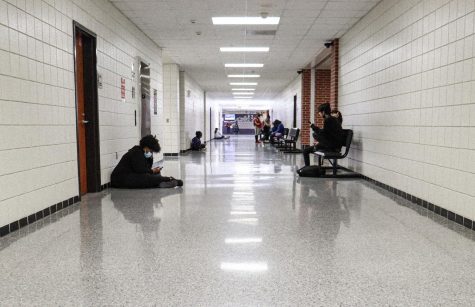Education Epidemic: Legislation
Legislation on undiversifying our history of race and identity.
The United States of America has paved and fought for enabling a more just and equal national society for all. The rights of people of color, undocumented immigrants, women, the LGBTQ+ community, and other minority populations are a part of our turbulent past of injustices, resistances, and the societal and cultural strife that polluted our nation. The United States cannot deny its history of such conflicts as it’s what has built the current foundation of our state. However, in present-day United States, there have been several state legislations in banning the discussion and association of the United States being inherently racist and having biased conversations on oppressions and discrimination. There have been eight state legislations passed for facilitating these efforts, including Idaho, Iowa, Arizona, South Carolina, Tennessee, Oklahoma, New Hampshire, and Texas. This is the education epidemic in banning the perceived aspects of critical race theory.
What is the actuality of critical race theory? Critical race theory or CRT in broad terms is a graduate-standard, educational framework with an extensive history in gaining information. Acknowledgement of the racial inequalities that have remained consistent throughout the history of the United States. It evaluates the entwinement of racism in U.S. social institutions, such as the education system and the criminal justice system, and society as the forms of regulations and procedures. CRT renounces the imposed way of thinking of the “colorblindness” perspective. CRT is based on systems that consistently reproduces poor effects rather than on incriminating a certain population for this division.
The origins of critical race theory are associated to the 1960s and 1970s as the movement of critical legal studies, which examined the service of law and legal institutions to the privileged, wealthy, and powerful exploiting impoverished, marginalized populations. Critical race theory had considered the rights of the law in its aid to the oppressed in comparison to critical legal studies. CRT was recognized in 1989 at the first annual Workshop on Critical Race Theory officially. It was created by an assortation of legal scholars, including Kimberlé Crenshaw, Derrick Bell, and Richard Delgado. Critical race theory had been primarily associated and implemented for graduate or higher-level university courses, however, a few traditional K-12 public schools are able to teach the course as well.
Nevertheless, the misrepresentation of the theoretical structure has made it appear that it divides individuals into oppressors and persecuted victims. The fear of guilt-tripping a population for sanctioning inequality and discussing “uncomfortable” topics in classrooms have prevented the capability of students to understand our history entirely. In Texas, Senate Bill 3 had been passed in removing the requirement of teaching slavery, women’s suffrage, the history of Indigenous people in America, and civil rights leaders and the movement entirely. Even though the legislation does not explicitly even use the term, “critical race theory,” it is often referred to as the banning of critical race theory.
The regulations emplaced have raised concerns and created disorder for the teachers in accommodating their curriculums to the standards that the bill has set. The restrictions in what educators are able to discuss are detrimental to the understanding of the truth and the entire perspective of our history. The bill essentially silences the voices of teachers in speaking and forwarding “divisive” topics for the sake of their livelihoods.
To add upon this thought, would classrooms be able to allow marginalized students to voice their experiences? Accommodating to the majority suppresses the minorities. The ban on these necessary debates and historical viewpoints are hindering the ethics and capabilities of our nation’s future generations.
The ban on critical race theory is shackling the nation’s ability to grow and change. The United States of America prospers from the efforts of activism, protests, and advocacy of the people in committing to ensure a more equitable and unbiased society. And by prohibiting the fostering of the discussions of “divisive” topics, such as racism or sexism, there will cease to be a systematic root for encouraging argumentation. Our nation cannot plainly escape the issues of the past, we must remember and honor the scars of those individuals who have given marginalized populations their rights, rather than covering them. In order to properly learn and live, stepping out of your comfort zone is essential and provocative topics are fundamental to the preservation of critical thinking and open-mindedness. The ban on critical race theory and the cultivation of altercations and the complete depth of our history is erasing the very liberties our ancestors have fought for. We, as a state, must ask ourselves: is enforcing students to this colorblind, white-washed perspective to diversity doing more harm or good for our nation?

Aidan Vu is a junior at Westside High School. This is his third year on the Howler News staff, progressing his way to being its editor-in-chief. Consequently,...

Ifraah Shegow is a senior at Westside Highschool. She is also involved in clubs such as kpop and avp. This is her third year on newspaper.
In her free...





















